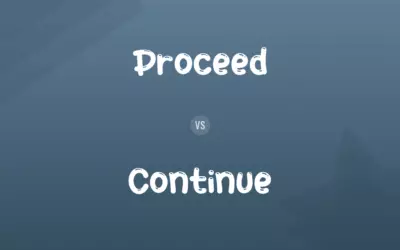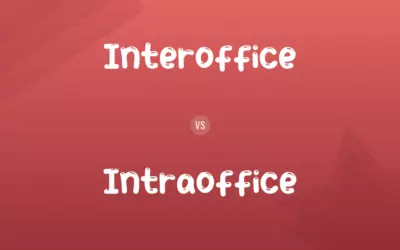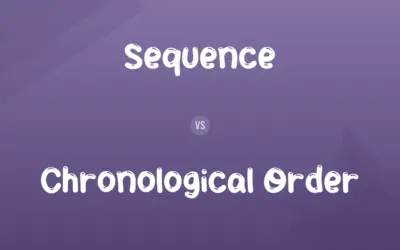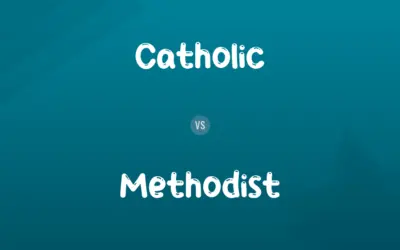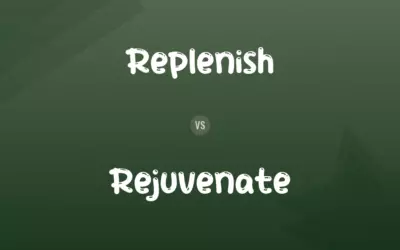Pliant vs. Flexible: Difference and Comparison
Edited by Muazma Batool — By Muneeza Rehman — Updated on February 29, 2024
Pliant suggests a quality of being easily bent or influenced, often implying a lack of resistance, while flexible denotes the ability to adapt or bend without breaking, suggesting resilience.
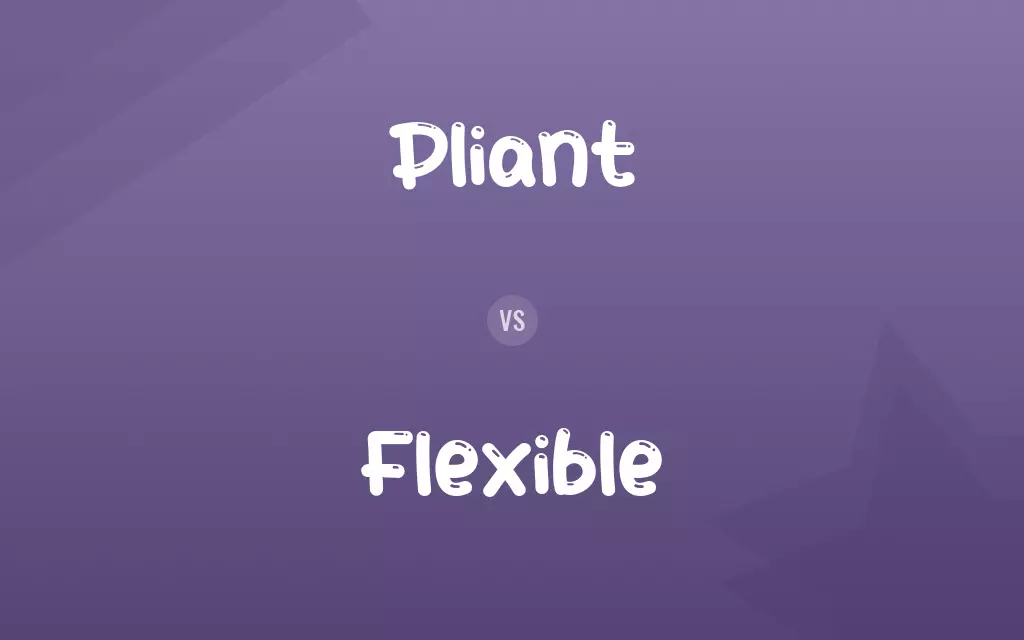
Difference Between Pliant and Flexible
Pliant and flexible both describe the capacity to adapt or adjust, but with nuanced distinctions in their applications and connotations. Pliant often carries a passive quality, implying that something or someone can be easily shaped, molded, or influenced by external forces. This can apply to materials that bend without much force or to individuals who are easily swayed or compliant in their attitudes or beliefs. In contrast, flexible suggests an active ability to adapt to changing circumstances or demands, whether in materials that return to their original shape after bending or in people who adjust their approaches or thoughts in response to new information.
Muneeza Rehman
Feb 29, 2024
The concept of pliancy emphasizes a yielding nature, which can be positive in contexts requiring cooperation and adaptability but may also suggest a lack of firmness or integrity. For example, a pliant material might be ideal for crafts that require shaping, while a pliant individual could be seen as lacking strong convictions. On the other hand, flexibility is often valued for its association with strength, resilience, and the capacity for innovation, especially in problem-solving or creative thinking. A flexible person is admired for their ability to navigate complex situations without compromising their core principles.
Muneeza Rehman
Feb 29, 2024
In physical materials, the distinction between pliant and flexible can be subtle but important. Pliant materials are easily bent or folded but may not always return to their original shape, suggesting a form of compliance without inherent resistance. Flexible materials, however, bend or stretch while maintaining their integrity, indicating not just the ability to undergo change but also to withstand it and recover.
Muneeza Rehman
Feb 29, 2024
In personal or organizational contexts, being pliant might mean conforming to external pressures or demands with little resistance, which can be advantageous in rapidly changing environments but may also lead to vulnerability. Being flexible, however, indicates a strategic approach to change, where adjustments are made thoughtfully and with an eye toward long-term success and stability.
Muneeza Rehman
Feb 29, 2024
Choosing between describing something as pliant or flexible depends on the specific qualities one wishes to highlight: the ease of influence and adaptability of the former, or the resilient and innovative adaptability of the latter. Each term carries its implications, reflecting different aspects of changeability and resistance in materials, individuals, and organizations.
Elijah
Feb 29, 2024
Pliant vs. Flexible Comparison Chart
Connotation
Easily influenced or bent
Adaptable, able to bend without breaking
Muneeza Rehman
Feb 29, 2024
Implication
Lack of resistance, compliance
Resilience, strength under pressure
Muneeza Rehman
Feb 29, 2024
Application
Often used to describe materials or individuals with a tendency to yield
Typically refers to adaptability in both materials and behavior
Muneeza Rehman
Feb 29, 2024
Physical Properties
Can be bent or shaped easily, may not return to original shape
Can bend or stretch and return to original shape
Jonathan
Feb 29, 2024
Psychological Aspect
Suggests a readiness to conform or acquiesce
Implies openness to change, innovation, and problem-solving
Leo
Feb 29, 2024
Ideal for
Situations requiring ease of manipulation or compliance
Contexts needing innovation, resilience, and adaptability
Jonathan
Feb 29, 2024
Examples in Material
Thin, easily moldable plastics or metals
Rubber or spring steel, which return to form after bending
William
Feb 29, 2024
Examples in Behavior
Acquiescing to peer pressure without much resistance
Adjusting strategies or thoughts in response to new challenges
Muneeza Rehman
Feb 29, 2024
Pliant vs. Flexible Definitions
◉Pliant
Ready to comply.
His pliant nature made him popular among his more assertive peers.
Muneeza Rehman
Feb 29, 2024
◉Flexible
Resilient under pressure.
The team's flexible strategy led them through the crisis.
Muneeza Rehman
Feb 29, 2024
◉Pliant
Susceptible to influence.
The pliant committee readily accepted the new proposal.
Lucas
Feb 29, 2024
◉Pliant
Moldable, adaptable to shape.
The artist preferred pliant materials for her sculptures.
Muneeza Rehman
Feb 29, 2024
◉Flexible
Open to new ideas.
He was flexible in his planning, allowing room for innovation.
Levi
Feb 29, 2024
◉Pliant
Easily bent or influenced.
The pliant branches swayed gently in the breeze.
Muneeza Rehman
Feb 29, 2024
◉Flexible
Capable of bending without breaking.
The flexible wire could be twisted into various shapes.
Muneeza Rehman
Feb 29, 2024
◉Flexible
Adaptable to change.
Her flexible approach solved the unexpected problem.
William
Feb 29, 2024
◉Pliant
Easily altered or modified to fit conditions; adaptable
a pliant poetic form.
Muneeza Rehman
May 03, 2023
◉Flexible
Readily bending or twisting the body without injury
You can play soccer much better if you're flexible.
Muneeza Rehman
May 03, 2023
◉Flexible
Able to change to cope with variable circumstances
"a flexible and quietly competent administrator" (Jerome Karabel).
Muneeza Rehman
May 03, 2023
Pliant vs. Flexible Frequently Asked Questions
What does flexible mean?
Flexible refers to the ability to adapt or bend without breaking, indicating resilience and adaptability.
Muneeza Rehman
Feb 29, 2024
What does pliant mean?
Pliant means easily bent, shaped, or influenced, often suggesting a lack of firmness or resistance.
Muneeza Rehman
Feb 29, 2024
Is being pliant the same as being flexible?
While similar, being pliant emphasizes a passive capacity to be shaped or influenced, whereas being flexible highlights an active ability to adapt while maintaining integrity.
Muneeza Rehman
Feb 29, 2024
How can one develop a more flexible approach?
Developing a flexible approach involves being open to new ideas, willing to change, and capable of thinking creatively to solve problems.
Muneeza Rehman
Feb 29, 2024
Why is flexibility important in the workplace?
Flexibility is crucial for adapting to new challenges, fostering innovation, and maintaining resilience in a rapidly changing environment.
Kaitlyn
Feb 29, 2024
Is it better to be pliant or flexible?
It depends on the context. Pliancy can be beneficial in situations requiring compliance or adaptability, while flexibility is valued for its association with resilience and innovation.
Leo
Feb 29, 2024
Can a material be both pliant and flexible?
Yes, some materials may exhibit both qualities to a degree, but the emphasis differs between ease of shaping (pliant) and resilience (flexible).
William
Feb 29, 2024
Are pliant individuals always weak?
Not necessarily. Pliancy can be a strategic choice in certain situations, though it may be perceived as a lack of conviction if overapplied.
Levi
Feb 29, 2024
Can flexibility be learned?
Yes, flexibility in thinking and behavior can be developed through experiences, challenges, and a willingness to adapt to change.
Olivia
Feb 29, 2024
Does being pliant affect personal relationships?
Being pliant can impact relationships, as it may lead to unequal dynamics if one party consistently yields to the other without expressing their own needs or opinions.
Muneeza Rehman
Feb 29, 2024
Content Creators
Written by
Muneeza RehmanAt Comparisons.wiki, Muneeza skillfully navigates the vast sea of information, ensuring clarity and accuracy as the lead content editor. With a keen eye for detail, she curates every comparison to enlighten and engage readers.
Edited by
Muazma BatoolAs a content editor, Muazma Batool is not just a grammar guru but a creative mastermind who breathes life into every word. With an eagle eye for detail and a passion for storytelling, she transforms bland text into engaging content that captivates audiences and drives results.











